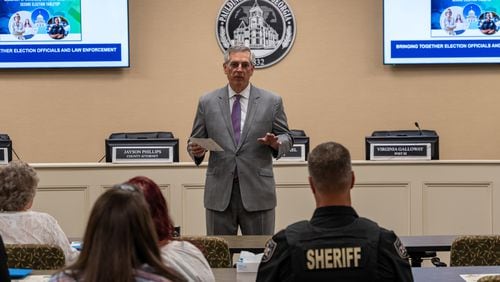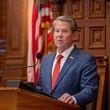Last month, the White House released President Trump’s long-awaited infrastructure proposal. As a member of the Transportation and Infrastructure Committee, it’s encouraging to see America’s attention turn to an issue that I know is so important to folks in our district, across the state, and throughout the nation. In fact, our very own Speaker of the Georgia House was representing our state at the White House as the President unveiled the proposal. While there is plenty to cover, there are two specific components of the plan that really excite me.
The first big pillar of the plan is empowering state, local, and private partnerships. If you joined my town hall where we had Georgia DOT commissioner Russell McMurry on the line, you heard both of us talk about the importance of this piece of the infrastructure puzzle. The President’s plan wants to refocus the federal government’s role in building infrastructure to facilitating interstate commerce rather than park benches and bike paths.
Whatever you think of President Trump’s politics or ideology, it’s hard to dispute that he knows how to build things. More importantly, he knows on a project manager-level how difficult the federal government makes it to build. The federal tentacles have gotten into just about every facet of infrastructure, and it’s time we look for those places where the federal government can step back and be a true partner to state and local governments rather than a bully and a hindrance.
In Georgia today, using a federal dollar to build, instead of a state or local dollar can delay a project by more than four years. In Forsyth County, we’ve been trying to widen a two-and-a-half mile stretch of Georgia Highway 20 using federal dollars since 2005 – the same year YouTube launched! Delays and overruns caused by federal red tape render projects obsolete by the time they are completed. We can’t afford to keep doing things the same way we’ve always done them. Rebuilding our outdated, over-capacity infrastructure is going to require the kind of major reforms that we have laid out in the House Transportation Committee, and that the President has now endorsed.
What we are striving for is a new paradigm on how we spend transportation dollars. This plan refocuses federal attention on large federal priorities and seeks to move the federal government out of the way so that our highly capable state and local officials can deliver state and local projects.
The DOT is going to transition to its proper role of overseeing, managing, and funding only those projects that have a national impact. We’re going to spend more time building and improving freight corridors, ports for international trade, and those national priority projects that move the needle for America’s growing economy.
The financing component is the second part of the President’s plan, and proposes a significant new effort to incentivize the completion of projects. The Administration wants to pair $200 billion of direct federal investment with a much bigger chunk of state, local, and private spending, bringing the total to $1.5 trillion. Additional federal dollars will be targeted at those communities that are working the hardest to help themselves. For example, projects like the Savannah Harbor Expansion Project (SHEP), which has already attracted considerable non-federal investment for years, are going to look much more attractive.
Today, localities already lead — state, local, and private funding currently make up about 86 percent of transportation spending — and this proposal recognizes and rewards that effort. After all, why should they bear the burden of redundant federal regulations when they are in fact already shouldering the bulk of the funding and leadership burdens for their projects? Since 2012, 31 states have approved plans to invest more funding in infrastructure, and Georgia is one of those states. We’ve implemented a number of local and regional funding initiatives as well as a statewide increase to the tune of a billion dollars a year. The President’s proposal encourages that trend and invests in states willing to put their own skin in the game. Today the federal government is responsible for a minority of transportation spending and a majority of transportation headaches; our plan removes those headaches.
Some in Congress wonder if a $200 billion increase in direct federal investment is enough to move the needle. I remind them, that is just seed money, and for the first time it’s going back home with fewer federal bureaucratic strings attached. We’ll be doing reviews in two years rather than 10 years. We’ll be partnering with our state and local officials rather than burying them in bureaucracy. This plan implements reforms that ensure American taxpayers get a dollar’s worth of value out of a dollar’s worth of investment.
Bottom line: you’re going to be seeing a lot more orange cones during your commute, but those cones are going to come and go faster than ever before — and soon, so will you.
About the Author





